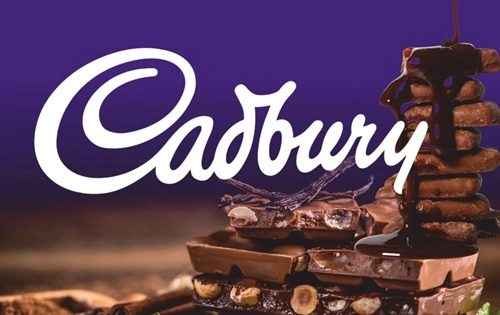Cadbury, founded in Birmingham in 1824 and now under the global snack giant Mondelez International, remains one of the world’s most beloved chocolate brands. In Q1 2025, Mondelez posted net revenue of US $9.31 billion—flat YoY—driven by strong pricing actions. Despite a 3.5% drop in chocolate volumes, segment-level revenue grew 10.1% organically, buoyed by price hikes averaging 6.6 percentage points. However, soaring input costs—especially cocoa—led to a projected 10% decline in 2025 profits, and gross margins dropped to 31.5%. Against this backdrop, a structured SWOT analysis offers clarity on Cadbury’s position and path ahead.

Strengths
1. Unparalleled Brand Equity & Global Reach: Cadbury Dairy Milk is ranked as a top chocolate brand in over 78 countries, including India, South Africa, and UAE, demonstrating its global resonance. Supported by Mondelez’s scale, Cadbury’s operations span 70+ countries and benefit from powerful economies of scale.
2. Creative, Emotional Marketing: Cadbury has a legacy of memorable campaigns and strong consumer engagement. Its recent bicentennial “Yours for 200 Years” campaign and emotionally connective messaging continue to refresh its brand appeal.
3. Sustainability Commitments: Through the Cocoa Life program, Cadbury targets 100% sustainable cocoa sourcing by 2025. Additionally, its UK&I sharing bars now use 80% recycled plastic packaging, impacting ~300 million bars annually. These efforts bolster Cadbury’s ESG profile and consumer trust.
4. Parent Strength & Financial Backing: As a marquee brand of Mondelez—reporting FY 2024 net profit of ~$4 billion and free cash flow above $3 billion—Cadbury benefits from financial stability, marketing investment, and innovation capacity.
Weaknesses
1. Heavy Dependence on Chocolate Segment: Despite diversification efforts, Cadbury still relies heavily on chocolate products, exposing it to sugar‐reduction trends and health-conscious consumer shifts.
2. Pricing Vulnerability & Volume Decline: To offset cocoa cost inflation, Mondelez raised prices—but volumes fell significantly (−3.5%) in Q1 and are under pressure in markets like Europe where consumer sensitivity is high.
3. Controversies & Eroded Trust: Cadbury lost its Royal Warrant after nearly 170 years in December 2024, amid growing concerns over sustainability and corporate ethics. It also faces legacy criticisms related to child labor and deforestation in cocoa sourcing, alongside regulatory scrutiny in the EU for antitrust practices by parent Mondelez.
4. Limited Diversification: Compared to competitors, Cadbury’s presence in biscuits, beverages, or snacks beyond chocolate remains modest—lessening flexibility to shift into growing adjacent categories.
Opportunities
1. Emerging Market Growth: With rising urban incomes in Asia, Africa, and Latin America, Cadbury has expansion upside. Mondelez added 100,000 new stores in AMEA and Latin America markets in Q1 alone, boosting presence.
2. Product Innovation & Healthier Formats: Innovation continues with limited editions, flavor variants, and lower-sugar formats. Mondelez’s SnackFutures initiative supports launches like fruit/nut variants and regional innovations catering to wellness trends and taste preferences.
3. Expansion into Cakes & Pastries: Mondelez is entering fast-growi;ng adjacent categories via acquisitions (e.g., Evirth in China), positioning Cadbury to move into cakes and pastries—transforming it into a broader snacking brand.
4. Digital & E‑Commerce Penetration: Expanding e‑commerce, direct-to-consumer platforms, and digital activation offers Cadbury new engagement channels—especially for Gen Z and digital-first consumers .
Threats
1. Persistent Cocoa & Commodity Volatility: Cocoa prices soared to multi-year highs, driving profit forecasts down 10% in 2025. While futures prices have started to moderate, margin pressure remains a key risk point.
2. Shift to Healthier Eating Habits: Increasing regulation around sugar content and consumer adoption of healthier choices threaten core products unless reformulated innovation keeps pace .
3. Intense Competition & Private Labels: Cadbury competes with global giants (Nestlé, Mars, Ferrero) and low-cost private labels. These players aggressively target both price and niche segments, squeezing margins and share .
4. Regulatory & Reputation Risks: Issues related to antitrust fines, child labor exposure, sustainability lapses, and packaging regulation (e.g., UK plastic rules) could trigger reputational and legal burdens .
Financial & Market Snapshot
- Mondelez Q1 2025 Net Revenue: US $9.31 billion (flat YoY)
- Chocolate Segment Organic Growth: +10.1% despite volume decline (−5.7%)
- Annual Profit Outlook: ~10% decline projected in adjusted EPS for 2025
- Packaging Benchmark: 80% recycled plastic wrapping >300m sharing bars in UK&I by end‑2025
Future Outlook
Cocoa Cost Normalization & Margin Recovery: As cocoa futures soften, Cadbury can regain pricing flexibility and restore margins. Mondelez’s reaffirmed 5% organic revenue growth outlook for 2025 provides stable near‑term guidance.
Expansion into Non‑Chocolate Snacks: Moving into cakes, pastries, biscuits, and healthier snacking formats will diversify revenue streams and reduce reliance on traditional chocolate categories.
Deeper Penetration in Emerging Markets: Continued rollout of Cadbury variants tailored for India, Africa, Latin America, and Southeast Asia can leverage rising middle-class snacking habits.
Sustainability as Brand Differentiator: Cadbury’s Cocoa Life program and recycled packaging initiatives should reinforce brand trust and appeal to ESG-conscious consumers, especially in developed markets.
Product Reformulation & Innovation: Cadbury must continue reducing sugar levels, launching fortified or low-calorie options, and iterating on popular variants to meet evolving dietary norms.
Digital & Direct Consumer Growth: Accelerating engagement through e‑commerce, brand-owned apps, online marketing, and data-driven promotions will help Cadbury connect with younger, digitally-native consumers.
By leaning on its iconic heritage, global footprint, and bold sustainability stance, Cadbury has the tools to navigate short‑term cocoa headwinds and shifting consumer preferences. Long-term success hinges on expanding beyond chocolate, innovating in healthier formats, and translating brand equity into adjacent snacking journeys.